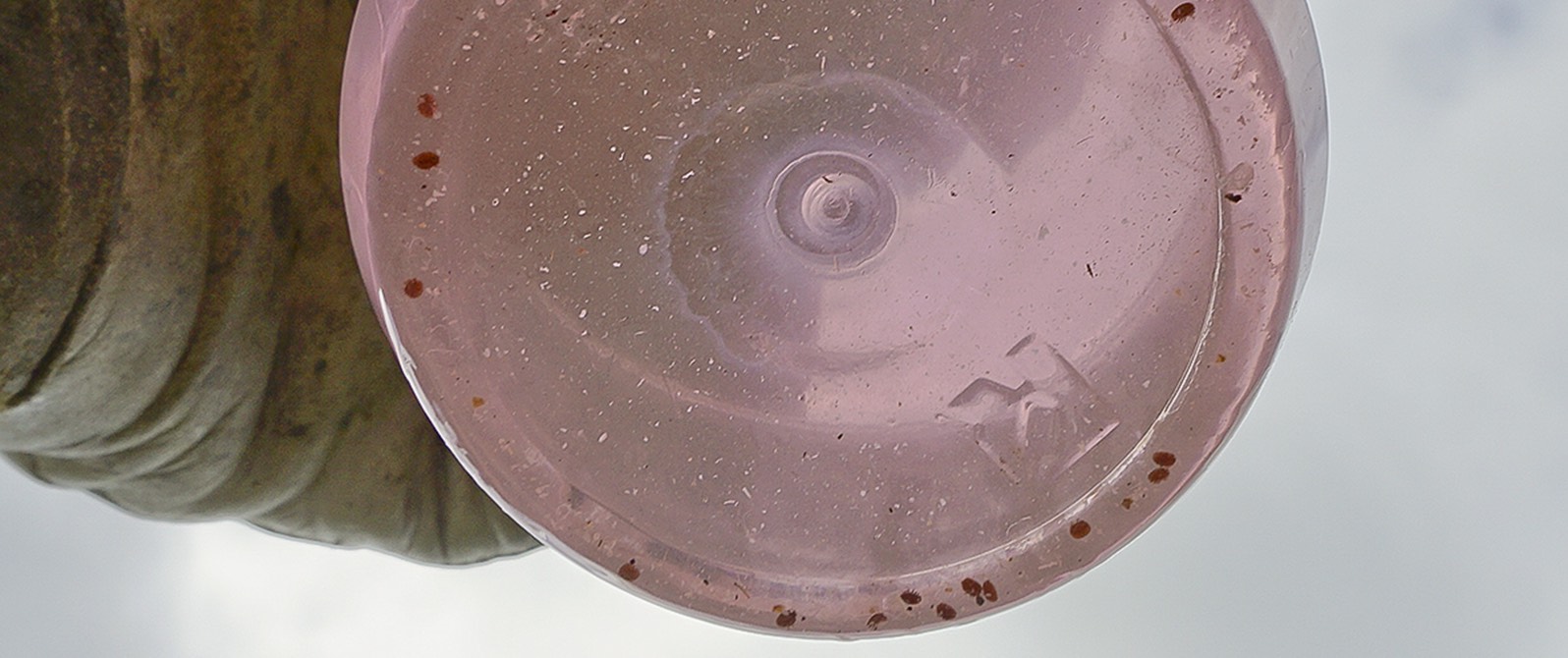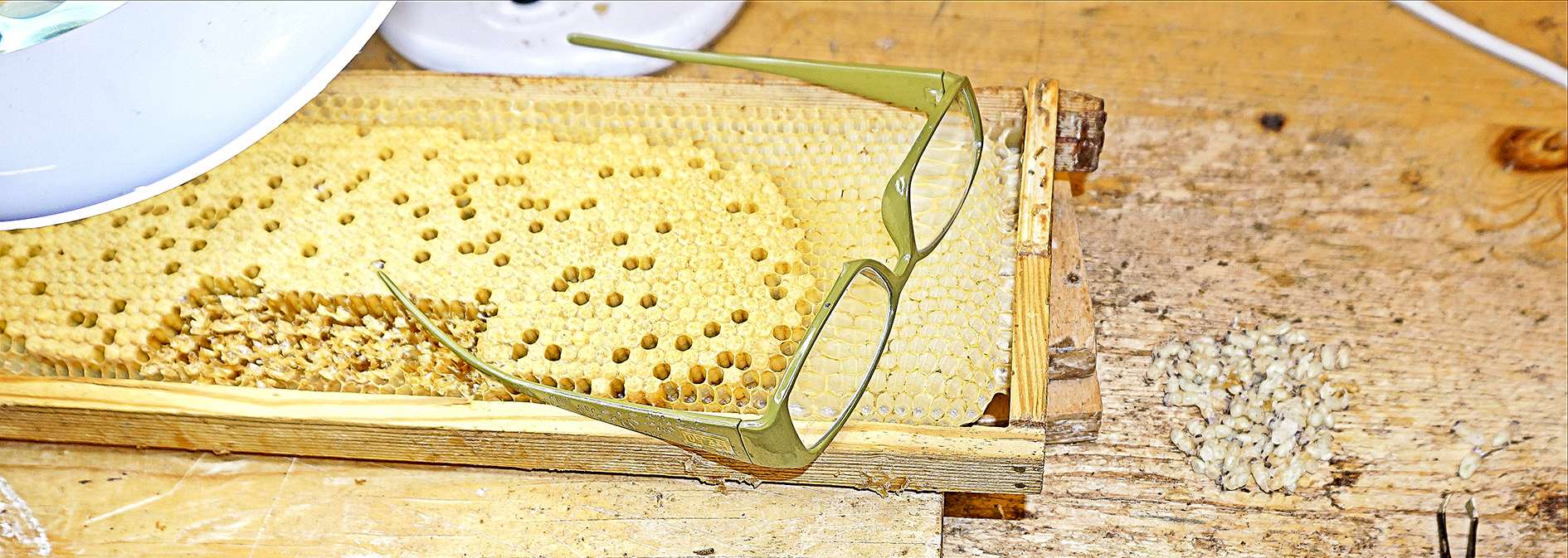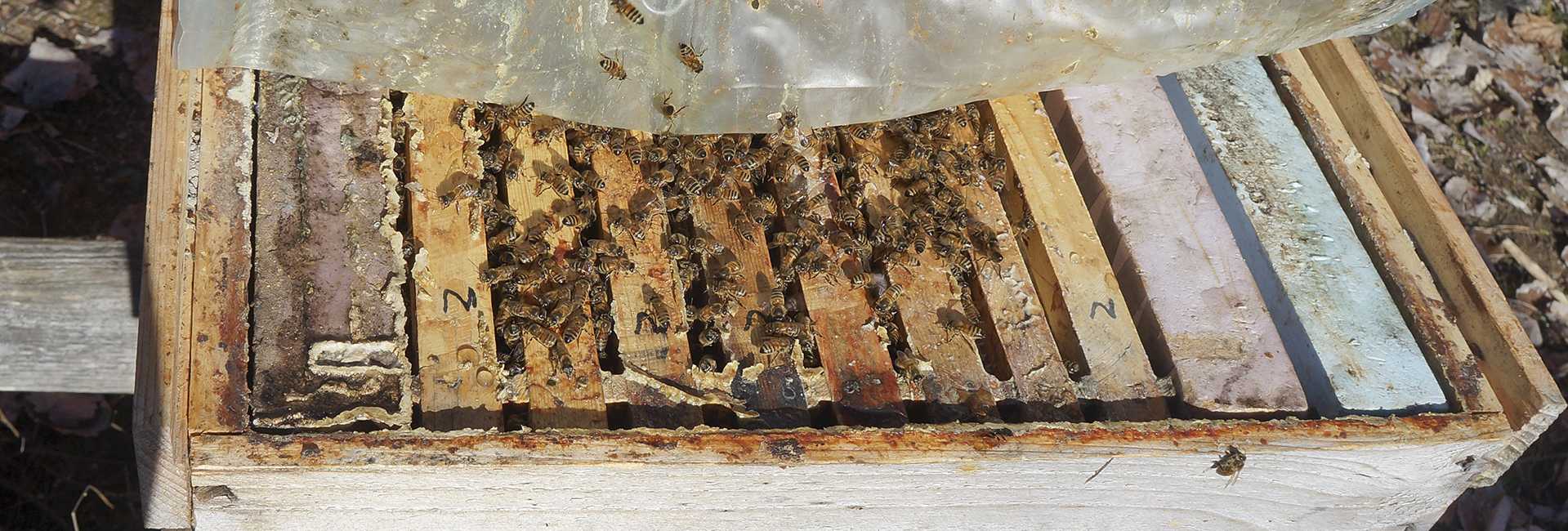Karin is a new beekeeper. She got thrilled when I took the feral swarm from the wall in one of her houses, so she wanted to keep bees. And got a daughter queen from the feral swarm. She is very
Feedback on Elgon queens


Karin is a new beekeeper. She got thrilled when I took the feral swarm from the wall in one of her houses, so she wanted to keep bees. And got a daughter queen from the feral swarm. She is very
If you want to know the Varroa level in the bee colony this tool is handy. Twice a season can bee good if you use it for example in selecting your breeders. And which colonies need a new queen (high

Varroa mites multiply in bee larvae. After they come out of the cell when the bee is fully formed, they sit on the adult bees and suck hemolymph. It was observed many years ago that during the brood period of the

One mite from 300 bees. I understand that sometimes it’s a good idea to get an idea of the infestation level of varroa mites in bee colonies. You can take samples from a couple of colonies in an apiary to

I make notes. I’m sure you do to. How much is a good question. I made more notes as a beginner and quite some years after that. When I got well above hundred hives I began to question each kind

I have done some VSH-tests by now and maybe my experiences can inspire some of you. I have made a checklist that maybe can be of some help. What I use I use a reading lens with a ringlamp with
I found a good description of what happens in the brood cell here: http://www.ars.usda.gov/Research/docs.ht…44&page=14 There are good pictures of different stages in the development of the bee and of mite reproduction. There I also find the answer to my question and

I’m checking my, as I think, most promising colonies for the VSH trait. (http://www.elgon.es/diary/?p=146) After dragging out more than 1000 pupae I have learned a lot about analyzing what I see. But I understand it’s more to learn. And I’m

In the beginning of March the bees had their main cleansing flight after winter. In the beginning of April most of them had more combs and boxes given. At the end of April another round checking food, need for thymol,

Up till now anyway, this colony of bees (and their ancestors forming this colony’s ancestor colonies) that has lived in a wall since several colony generations, has never been treated with any kind of chemicals ever, against Varroa mites or